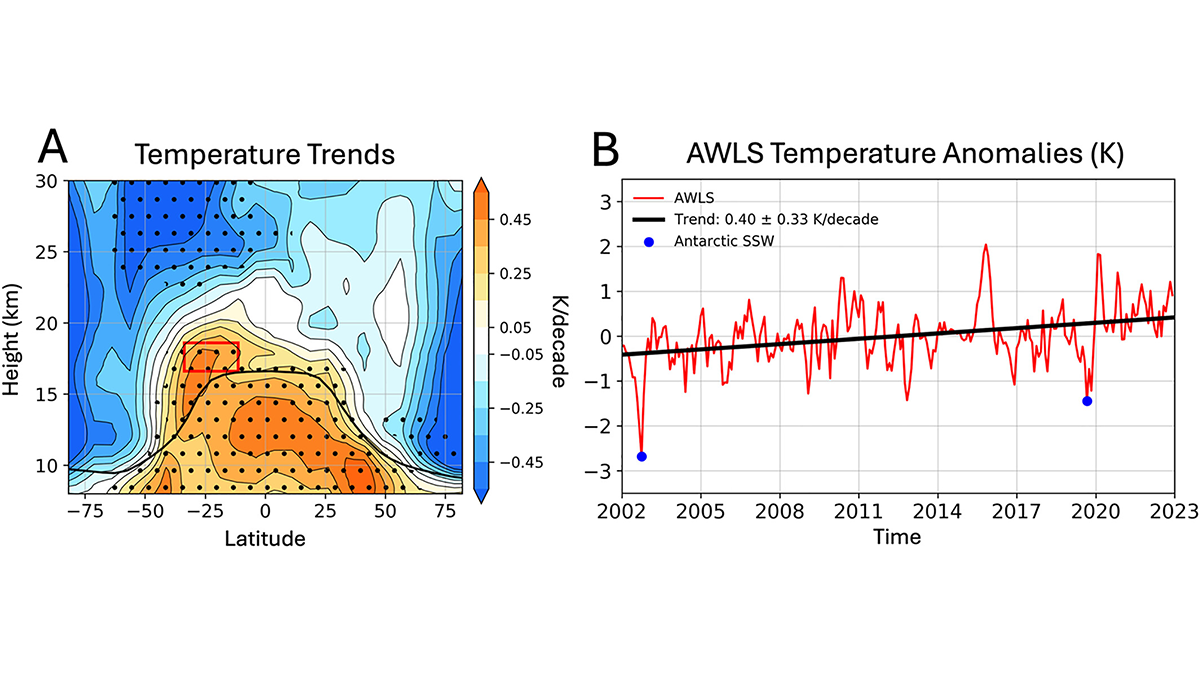Editors’ Highlights are summaries of recent papers by AGU’s journal editors.
Source: AGU Advances
Climate models predict that rising greenhouse gas levels cool the stratosphere, while the healing of the Antarctic ozone hole—driven by the reduction of ozone-depleting substances under the Montreal Protocol since the beginning of the 21st century—should warm the Antarctic lower stratosphere. However, observations for the period from 2002 to 2022 reveal unexpected changes: warming in the Southern Hemisphere (SH) subtropical lower stratosphere and cooling over Antarctica.
Sweeney et al. [2025] identify the cause as a slowdown in stratospheric circulation that moves stratospheric air and chemicals from low to high latitudes. These circulation changes, which are most pronounced from October to December, lead to warming in the subtropical lower stratosphere of the Southern Hemisphere and cooling in the Antarctic lower stratosphere. They also mask the anticipated ozone recovery over Antarctica during this period. Accounting for these circulation changes removes the anomalous warming of the SH subtropical lower stratosphere and reveals an obvious Antarctic lower stratospheric warming and enhanced ozone recovery. These findings highlight the crucial role of the stratospheric circulation in shaping temperature and ozone changes.
Citation: Sweeney, A., Fu, Q., Solomon, S., Po-Chedley, S., Randel, W. J., Steiner, A., et al. (2025). Recent warming of the southern Hemisphere subtropical lower stratosphere and Antarctic ozone healing. AGU Advances, 6, e2025AV001737. https://doi.org/10.1029/2025AV001737
—Donald Wuebbles, Editor, AGU Advances

